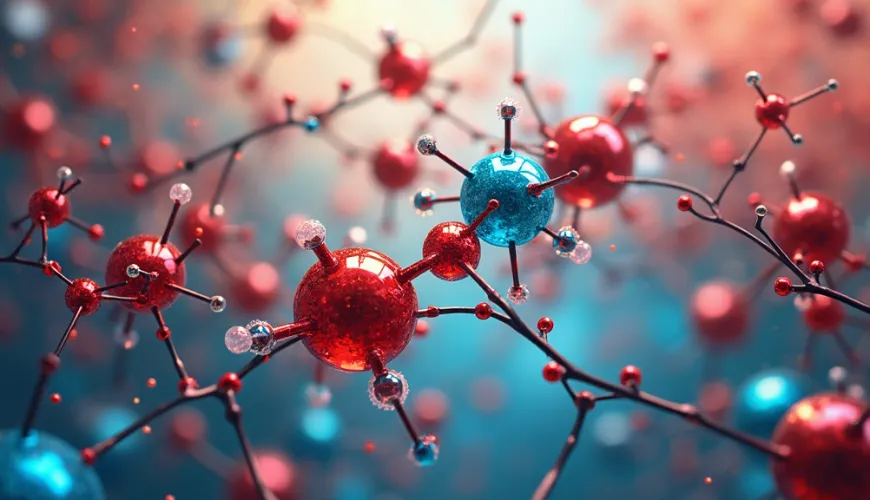Cracking the Code of Chemical Stability: The Octet Rule Explained
TL;DR: The octet rule is a cornerstone of modern chemistry.
It explains why atoms bond the way they do—from simple salts to complex biomolecules—while also clarifying the famous "exceptions.”
Master it once and you can predict most bonding patterns you'll meet in class or the lab.
Why the Octet Rule Still Matters in Modern Chemistry
Even if high school chemistry feels like a distant memory, the octet rule is still one of the most important ideas when it comes to understanding how atoms form stable compounds. Whether you're analyzing materials in a lab, developing pharmaceuticals, or even designing molecules using AI models, the concept remains surprisingly relevant.
Simply put, the octet rule says that atoms tend to gain, lose, or share electrons to have eight electrons in their outer shell—like the noble gases. This "full” valence shell is what makes certain atoms chemically stable. It's kind of like atoms playing a game of musical chairs where everyone wants the perfect spot.
In everything from salt crystals to the DNA in your cells, the octet rule helps explain why atoms pair up the way they do. It's a key principle that shows up across basic and advanced chemistry—and even in AI-powered simulations of molecular behavior.
A Quick History Lesson (and a Refresher on Lewis Structures)
The octet rule traces back to the early 20th century when chemists like Gilbert N. Lewis and Walther Kossel were trying to figure out how atoms bond. Lewis's idea was that atoms bond to achieve the electron configuration of noble gases—usually with eight electrons in their outer shell.
This led to the development of Lewis structures, which are diagrams that show how atoms share or transfer electrons to satisfy the rule. If you've ever drawn dots around chemical symbols, you've already met them.
Take oxygen (O₂) for example. Each oxygen atom has six valence electrons, so they share two electrons with each other to reach that magic number eight. Drawn out, those shared electrons form a double bond—two lines between the atoms in a Lewis structure.
Understanding Lewis structures is essential to visualizing how the octet rule works in both ionic and covalent bonds, especially when things get more complicated with molecules like SO₂ or NH₄⁺.
Ionic vs. Covalent Bonding Through the Lens of the Octet Rule
The real magic of the octet rule is how it explains different types of chemical bonds:
Ionic Bonds
In ionic bonding, one atom donates electrons while the other accepts them. This usually happens between metals and nonmetals. Think sodium chloride (NaCl)—table salt. Sodium (Na) gives up one electron, becoming positively charged (Na⁺), while chlorine (Cl) takes that electron, becoming negatively charged (Cl⁻). Both end up with full outer shells.
The octet rule helps us understand why this transfer works. Sodium ends up with a full second shell (since it loses its single third-shell electron), while chlorine fills up its third shell. Simple but powerful.
Covalent Bonds
Covalent bonding is more about sharing than giving. Nonmetals, like hydrogen and oxygen, share electrons to meet the octet rule. In a water molecule (H₂O), the oxygen atom shares one electron with each hydrogen atom. This gives oxygen a full shell and helps hydrogen mimic the stable configuration of helium (which only needs two electrons).
By understanding octet rule chemistry, we can predict shapes of molecules, their reactivity, and even their polarity. It's like having a cheat code for understanding how atoms behave in different contexts.
Want to see how this applies in creative fields too? Our guide on creating fantasy art with generative AI shows how chemical motifs inspire everything from palette choices to composition.
When the Octet Rule Breaks Its Own Rules
While the octet rule is a strong guideline, it's not a law of nature—and there are plenty of exceptions that keep things interesting.
Hydrogen and Helium
These two are the minimalists of the periodic table. Hydrogen only needs two electrons to be stable, making it the odd one out in many chemical reactions. Helium, being a noble gas, already has its two and doesn't usually react at all.
Boron
Boron often forms compounds where it ends up with just six electrons in its outer shell—like in BF₃. This makes it "electron-deficient,” and it doesn't follow the octet rule in a strict sense.
Phosphorus and Sulfur
These elements can expand their octets, especially when involved in compounds like PCl₅ or SF₆. Since they're in the third period or beyond, they have access to d-orbitals, allowing them to hold more than eight valence electrons.
Transition Metals
Transition metals are a world of their own. They often violate the octet rule entirely, forming complex ions like Fe³⁺ or Cu²⁺ with varying numbers of d-electrons. That's why they often show up as colorful compounds—as seen in everything from gemstones to catalysts.
Curious how modern models simulate such oddball molecules? See our walk‑through on large‑scale deep‑research pipelines at OpenAI for a peek under the hood.
How the Octet Rule Powers Real-World Chemistry and Beyond
So why should you care about the octet rule if you're not actively working in a lab? Because it influences real-world phenomena that touch multiple disciplines—including AI-assisted chemistry.
Materials Science
From the strength of steel to the flexibility of polymers, the octet rule helps materials scientists predict how atoms will bond in different environments. Understanding bond stability is crucial for designing substances that are lightweight, heat-resistant, or ultra-durable.
Biochemistry
In biological systems, molecules like ATP, proteins, and enzymes are held together by bonds that obey (or intentionally break) the octet rule. Enzyme-substrate interactions, protein folding, and even DNA base pairing rely on predictable bonding patterns.
AI-Driven Molecular Design
With tools like machine learning and generative models, we're now using AI to simulate and predict molecular structures. These models use principles like the octet rule to generate new compounds virtually before they're ever tested in a lab.
Want to see how our platform Claila is contributing to this space? Try our ML‑powered ComfyUI Manager, which can auto‑label complex diagrams and feed them straight into a molecular‑design workflow.
Watch Out: Common Mistakes When Learning the Octet Rule
As fundamental as it is, the octet rule is often misunderstood—especially by students and beginner chemists. Here are a few common pitfalls to keep in mind:
Over‑applying the rule is the first big trap: not every atom aims for eight electrons (think hydrogen or boron), and forcing the octet can produce impossible structures.
Ignoring formal charges is another. Even a perfect octet may hide an unstable charge distribution, so always calculate them.
A third pitfall is forgetting resonance; molecules such as ozone (O₃) or nitrate (NO₃⁻) delocalise electrons, meaning no single Lewis picture tells the whole story.
Finally, many learners trip up by misplacing lone pairs or extra bonds. One missing pair can flip polarity or geometry entirely.
If you've found concepts like this confusing, you're not alone. Our quick read on why joint‑variation trips up students shows how similar logical slips appear in math as well as chemistry.
Study Smarter with These Octet Rule Tips
The octet rule might seem simple at first glance, but truly mastering it takes practice and a little strategy. Here are some tips to make the learning curve easier:
Practice Lewis structures daily. Start with CO₂, then graduate to tougher ions such as PO₄³⁻; muscle memory matters.
Memorise the headline exceptions—hydrogen, boron, sulfur and friends—so surprise questions never derail you.
Colour‑code your notes (or digital flashcards) to flag single, double and coordinate bonds at a glance.
Lean on AI visualisers; Claila can render electron clouds in seconds, turning abstract dots into vivid 3‑D.
Finally, teach the rule to someone else. Explaining forces you to spot gaps in your own logic.
Want to explore how generative AI can boost your chemistry skills? Check out our primer on AI‑driven digital security detectors—the same pattern-matching logic powers molecular screening too.
Recent quantum-chemistry studies even show how machine-learned potentials can predict octet-rule deviations with unprecedented accuracy. This breakthrough shortens multi-day quantum calculations to mere minutes on desktop GPUs right now.
Mastering the octet rule is more than just memorizing a rule—it's about understanding the "why” behind chemical stability. Whether you're a student, a researcher, or just someone curious about how atoms stick together, this rule opens the door to deeper insights. Try out Claila's AI tools right now to visualize molecules, simulate bonding, and bring chemistry to life in ways your old textbook never could.



